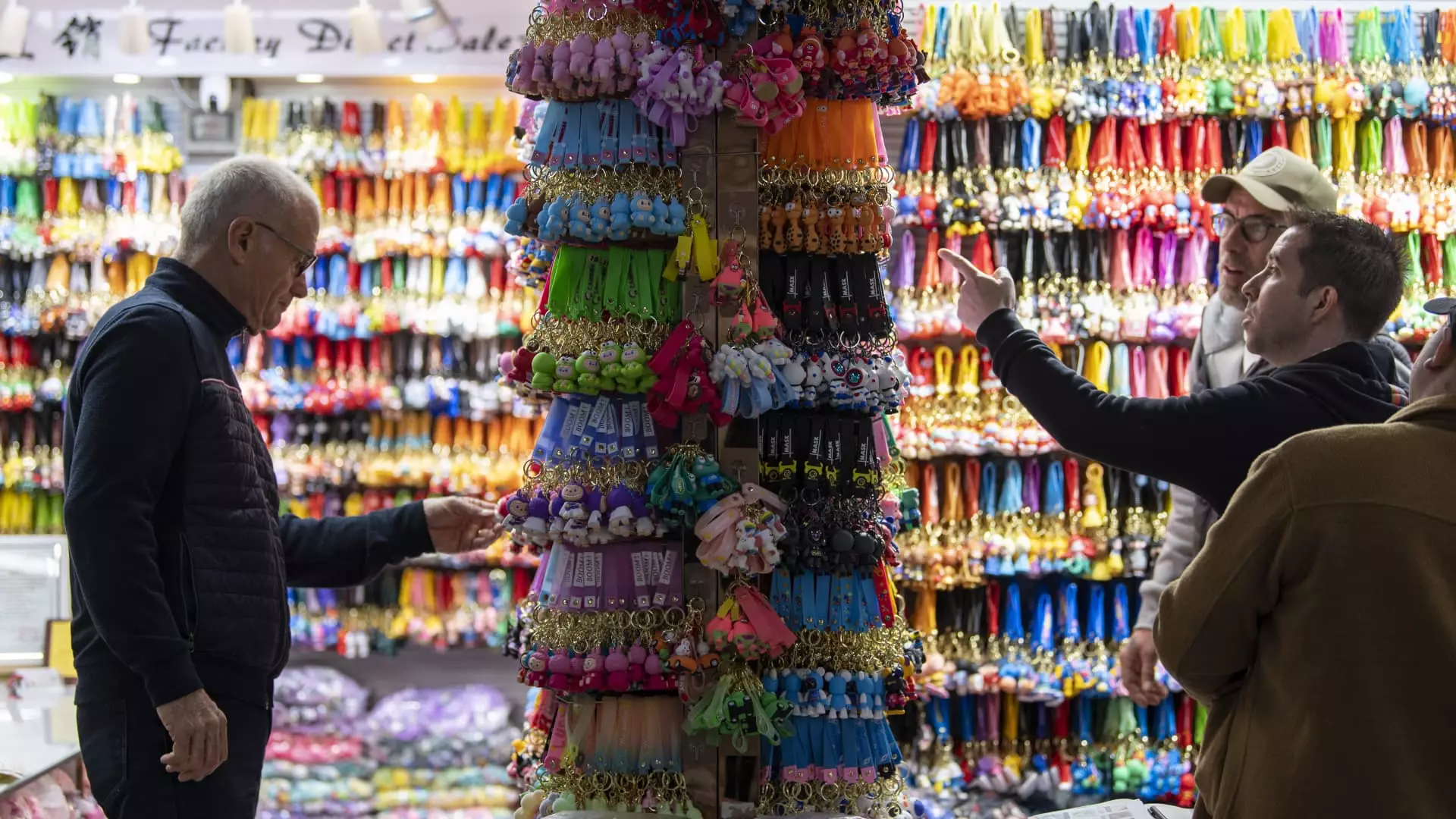The holiday season has morphed into a commercial frenzy, with retailers vying for dominance by strategically placing Christmas merchandise on shelves earlier and earlier each year. This phenomenon—often dubbed “Christmas creep”—has seen sales reaching sky-high figures, but at what cost? With tariffs looming over the retail landscape, the holiday cheer we’ve come to expect might be replaced with anxiety and uncertainty. The notion that our desires for timely, desirable products can be thwarted by political posturing is not just frustrating; it is disheartening and hold implications that reach far beyond our holiday shopping lists.
Imagine strolling through the aisles of your favorite store, only to find shelves bare of the festive trinkets you once took for granted. The reality is, tariffs, particularly those targeting imports from China, have begun to ripple through the supply chains crucial for stocking holiday merchandise. The statistics are grim: tariffs placed on imports have hiked prices dramatically, stoking fears in retailers about what impact this might have on their holiday sales. It’s not just the fear of empty shelves; it’s about lost opportunities, dwindling profits, and ultimately, a decline in the holiday spirit.
Chains of Disruption
The intricate web of global supply chains means that one disruption can halt the entire process. When the Trump administration announced a series of sweeping tariffs—at times increasing to an alarming 145%—the immediate effect was a cascade of halted orders from U.S. retailers. Factories, unable to predict whether they should continue operations, found themselves stuck in limbo. Cameron Johnson, a senior partner at Tidalwave Solutions, highlighted this dilemma by emphasizing the interconnected nature of supply chains. An interruption in spoon manufacturing could resonate into the raw materials used—they all feed into one another.
There’s a palpable tension as retailers and suppliers dance the tightrope of uncertainty. If factories pause production too long, they risk missing peak shopping events like Black Friday. This could set off a chain reaction, leaving retailers scrambling and consumers disappointed, forcing them to pay inflated prices for last-minute purchases. The reality is that many suppliers crucial to the holiday inventory are already feeling the sting, corroborated by rising levels of halted shipments and canceled orders. Amid these uncertainties, why is there not more significant public outrage?
The Waiting Game
For many retailers, the prudent strategy has turned into a waiting game. With some businesses electing to hold off on new orders in the hopes that tariffs might ease, the past few months have seen a sharp decline in export orders from Chinese factories. Those businesses are stockpiling current inventories, which sounds sensible, until you consider the broader implications: the potential for shortages, inflation, and ultimately, a less enjoyable holiday season.
Consumers may be forced to brace for higher prices or completely subpar alternatives if the tariffs don’t get adjusted by the time shopping season arrives. After all, when your beloved holiday ornaments come with a hefty price hike, the spirit of giving could easily transform into feelings of resentment toward a system that feels rigged. Even some textile manufacturers are feeling the heat, as they restrain new orders while praying for some relief measures, leaving many in the lurch.
False Hopes and Short-Term Solutions
What’s more disconcerting is that amid these challenges, there has been a flurry of temporary measures that do little to alleviate the long-term worries. Rumors of tariff exemptions on select U.S. goods have emerged, but how effective will such exemptions be when the ripple effects continue? The whims and expedience of political maneuvering may provide temporary solace but cannot substitute the viability of supply chains designed for consistency and reliability.
The conversation around tariff modifications, or the lack thereof, has become a constant murmur in boardrooms and at kitchen tables alike. Businesses feel under pressure to place orders with the prospect of anticipated relief. Unfortunately, any substantial breakthrough in trade negotiations could lead to a frantic rush to fulfill backorders, pushing production costs skyward. In essence, this precarious balancing act does little but throw consumers further into a state of ambiguity.
Emotional Toll on Consumers
While the economic considerations linger overhead, the emotional toll on consumers can easily be overlooked in the cacophony of corporate strategy. Consumers enter the holiday season with expectations tied to nostalgia and enjoyment. But when essential holiday products are damaged by policy, it creates an undercurrent of frustration that manifests in myriad forms: disappointment in the holiday experience, financial strain from inflated prices, and growing distrust towards the retail system itself.
It’s time that we recognize that holidays, while commercially driven, are also deeply personal experiences. Our spirit should not hinge on fluctuating tariffs or corporate greed. To cherish the moments of family and joy shouldn’t come at the expense of experiencing dread around the holiday shopping season. Yet, as the calendars turn and logistics further complicate our festive planning, the stark reality remains—politics and tariffs can indeed overshadow the joy we seek.

